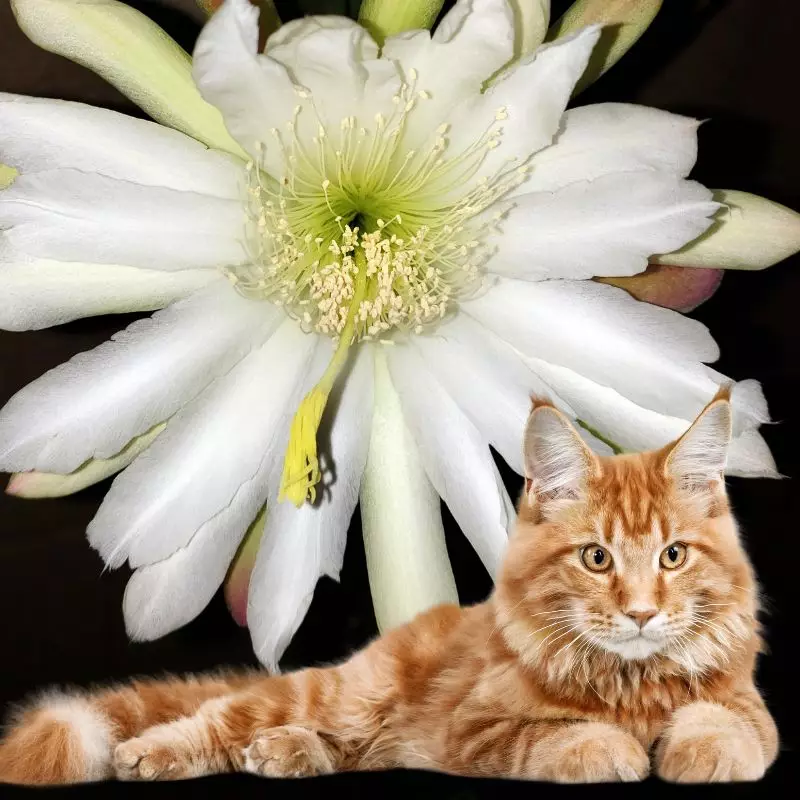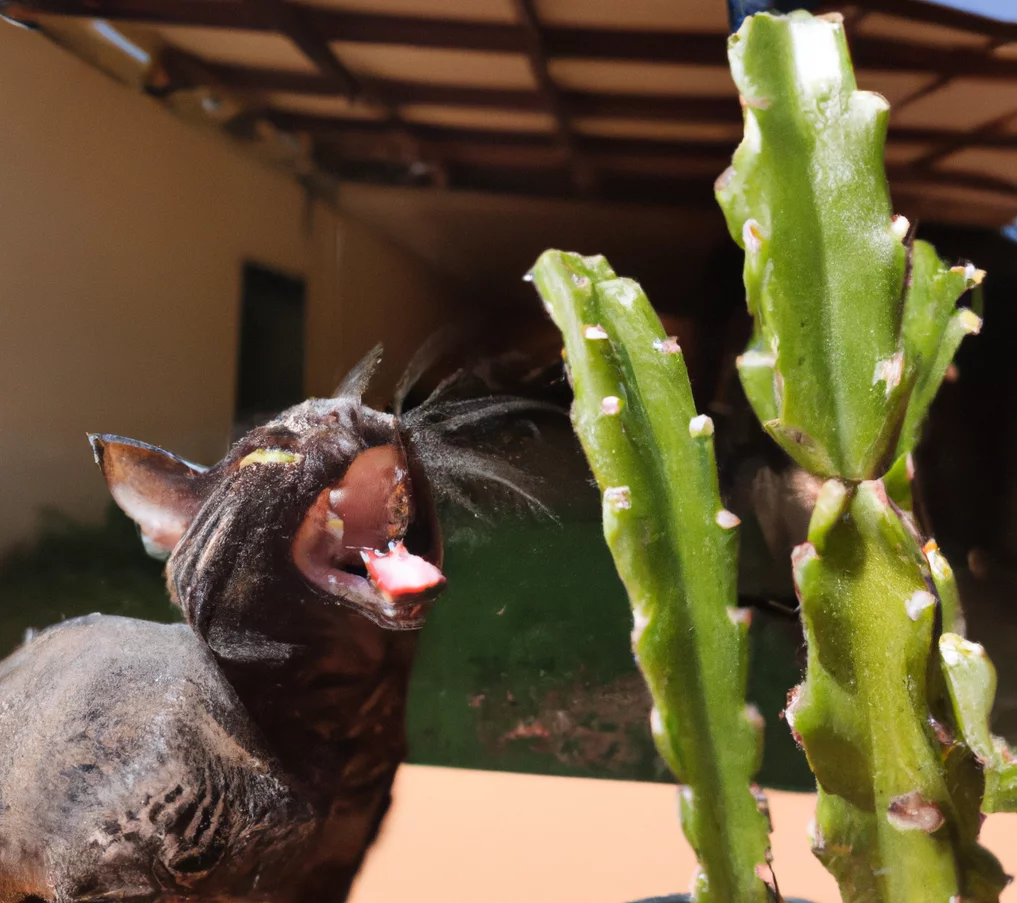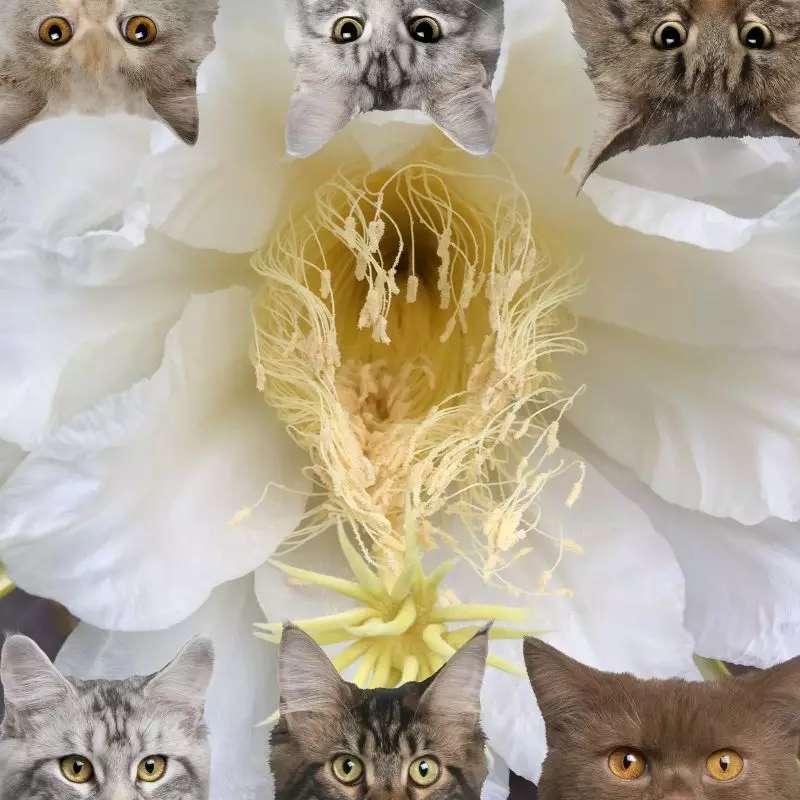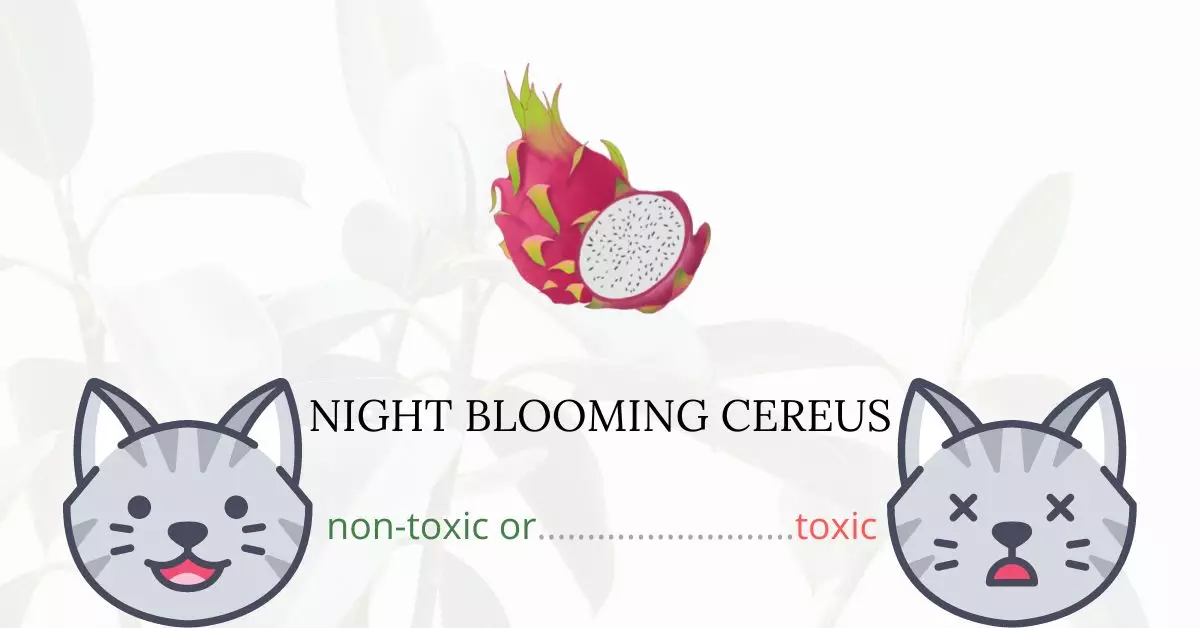No, Night-blooming cereus is not poisonous to cats.
This article has been crafted in close collaboration with a team of experienced DVMs (doctors of veterinary medicine). Through their expertise and contributions, we aim to provide you with accurate and current information regarding the potential risks various plants pose to our feline friends. Specifically, in the case of the Night Blooming Cereus, our findings are supported by high-authority websites such as the ASPCA and PetMD.
While it’s natural for cats to show curiosity towards indoor plants, including being enticed by the delicate leaves of the night-blooming cereus, it’s reassuring to know that this particular plant poses no toxic threat to them.
Can Cats Eat Night Blooming Cereus?

It’s normal for your cat to nip at indoor plants and grass. Cats may find the delicate leaves of the night-blooming cereus fascinating enough to play with or nibble on when they’re bored.
The ASPCA lists night-blooming cereus as non-toxic to cats, but because plants aren’t typically consumed by cats, consumption can have adverse effects such as gastrointestinal discomfort, skin irritation, vomiting, blistering of the gums, and mouth irritation.
What is a Night Blooming Cereus?

A fast-growing, vine-like tropical cactus known as the Night Blooming Cereus (Hylocereus undatus) is grown for its juicy, meaty fruit. Originating in Central America, it is currently grown in numerous nations with tropical and subtropical temperatures, including Israel, Australia, South Florida, California, and Taiwan.
It is frequently grown as a fruit crop as well as an aesthetic plant with night flowers. The fruit has brilliant red skin that is covered in green scales, making it very beautiful. With tiny black seeds, the white, juicy, and flavorful flesh is wonderful.
Night Blooming Cereus is a perennial long-lived plant. Producing fruit in a cultivation environment begins in the second year. It forms adventitious roots on rocks or trees to anchor its branched stems when it grows organically. A post and trellis system is used to support the vine-like stems during cultivation. It belongs to the Cactaceae family and uses relatively little water, like many cacti.
Keeping Cats Away From Night Blooming Cereus

Try planting catnip in a different place in your garden to draw the cats there if you just want to know how to keep cats away from certain garden plants.
Introduce plants like lavender and rosemary to your yard to deter cats. Lavender not only works well as a natural cat deterrent but also brightens up your garden and has a wonderful scent.
Gravel mulching is another efficient all-natural cat deterrent. To make your flowerbeds significantly less enticing for cats to walk on, layer gravel or stone chips among them.
Plants to Avoid For Your Cats
If you are a cat owner and unsure if the plants growing in your yard are harmful to your cats, check out this list of toxic plants for cats. You can also check our list of non-toxic plants for cats.





